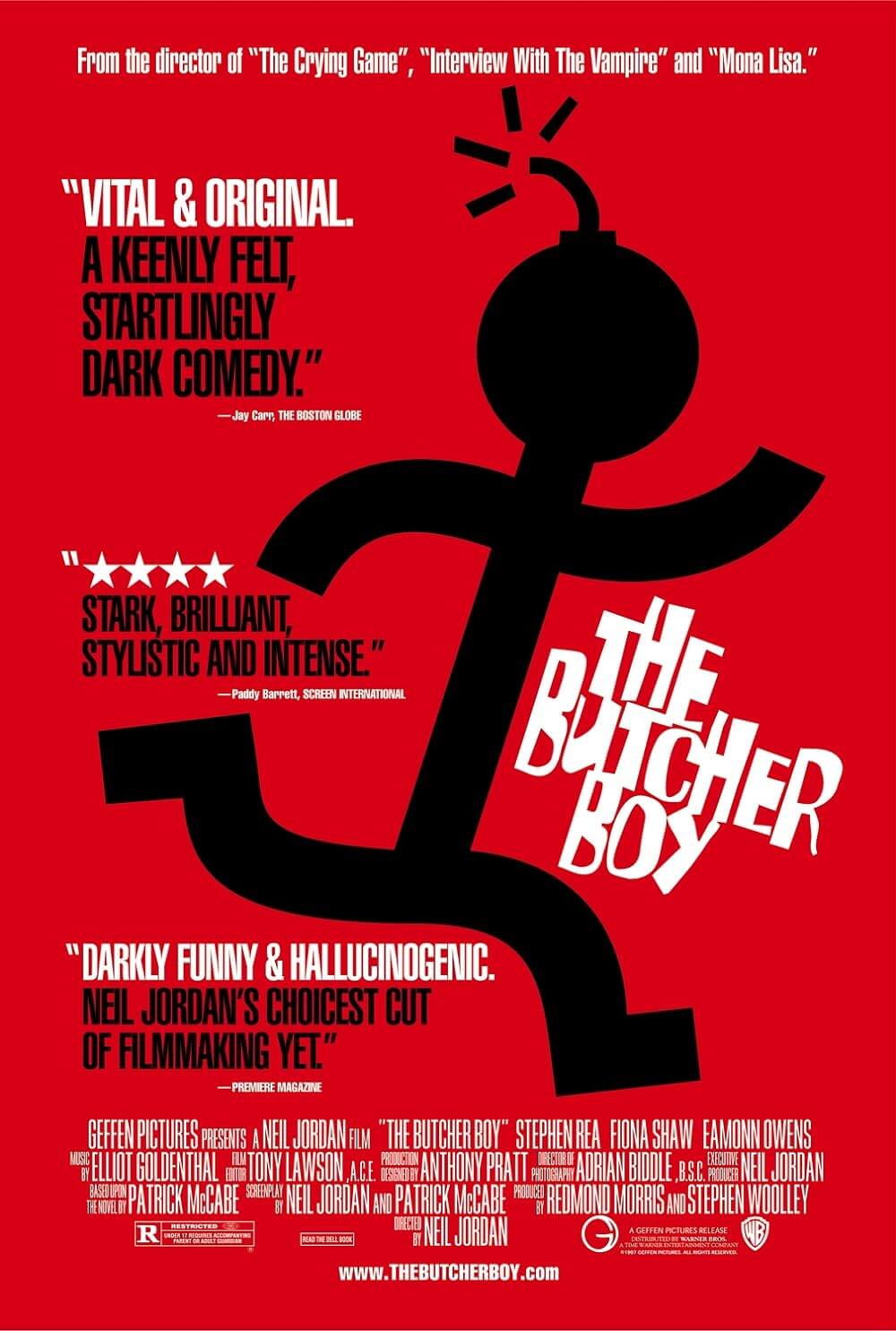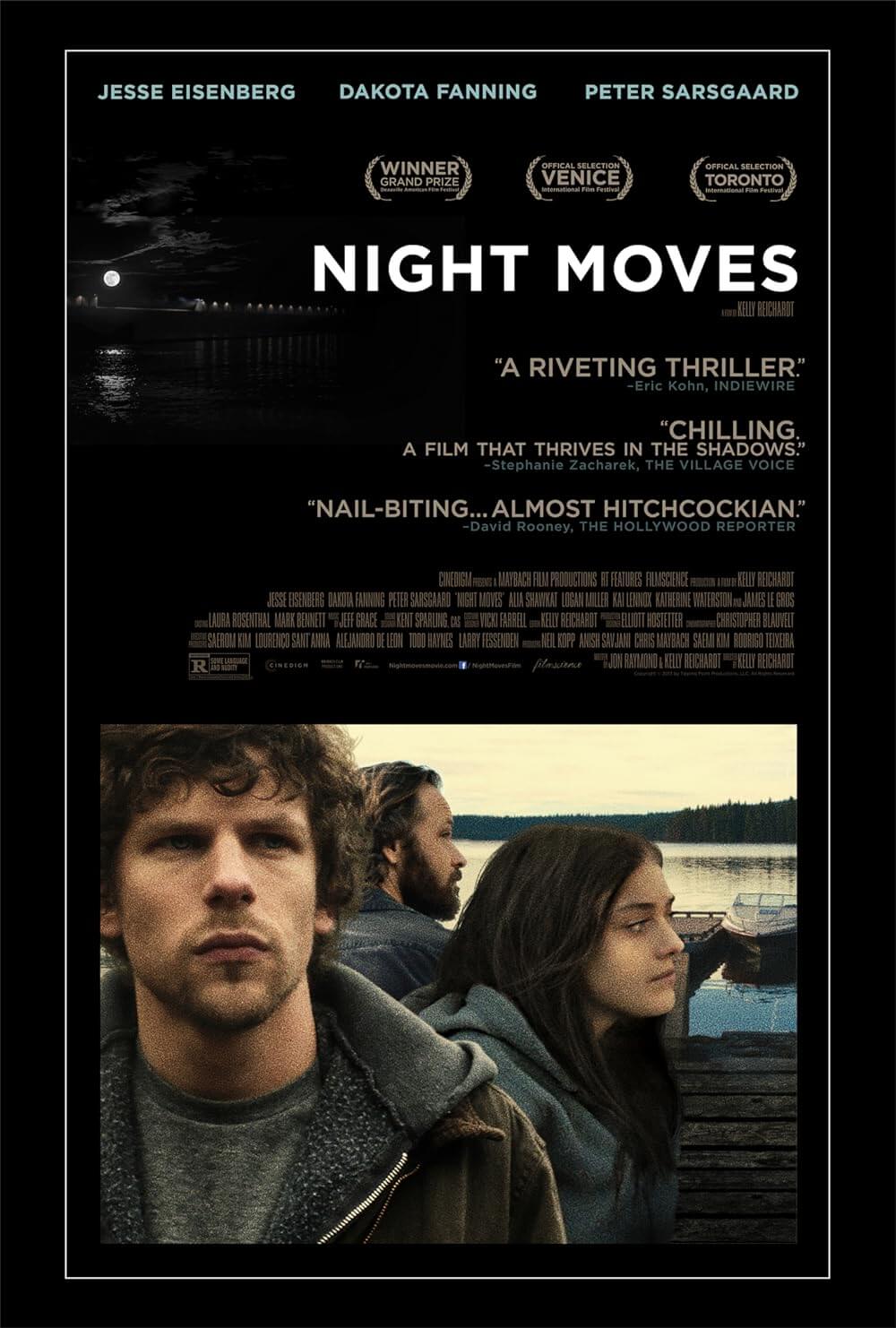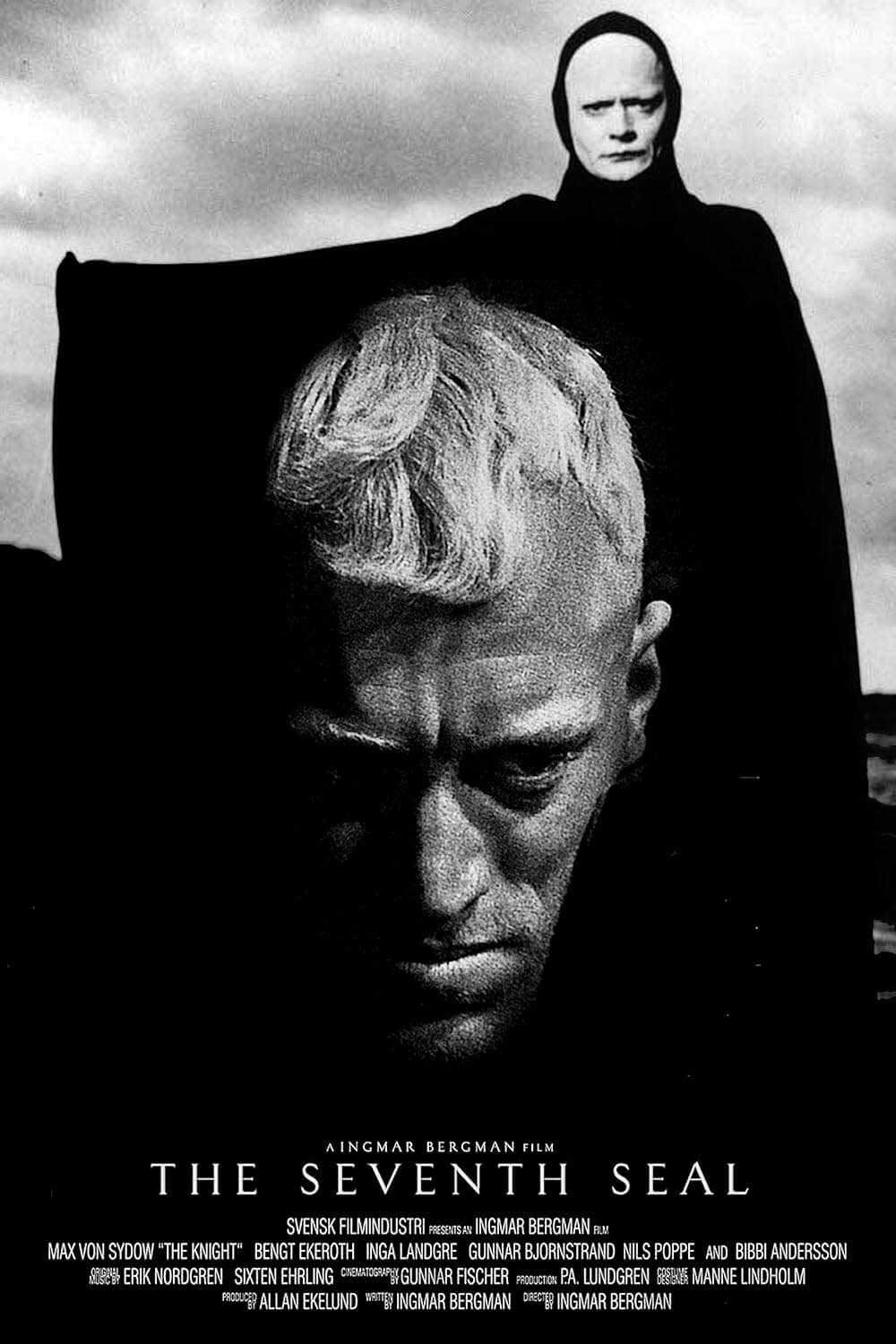The Definitives
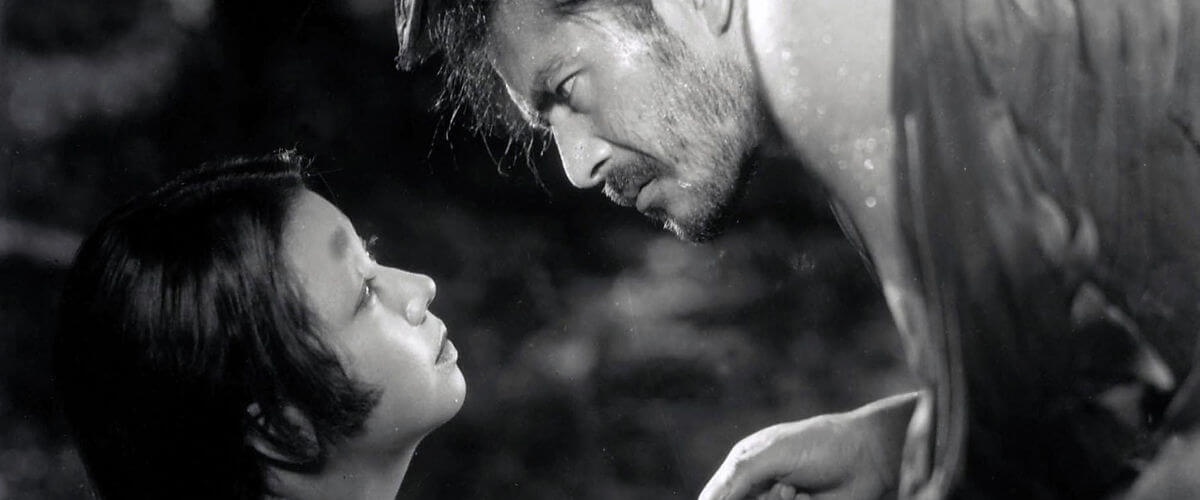
Rashomon
Essay by Brian Eggert |
The truth lies between lines of testimony in Rashomon, Akira Kurosawa’s philosophical tale whose enduring influence can be measured by the spread of Japanese cinema across the globe and its impact on modern storytelling. Expounded through an unconventional structure in which the same events have contradictory interpretations by its participants, the film takes the shape of an existential puzzle without an answer, employing unreliable narrators and flashbacks through which memory and truth become suspect. Countless other films and books have since borrowed this structure to explore the reality of events and their subjective truth; even courts of law have coined the term “the Rashomon effect” to describe the trend of clashing testimonies. Although Rashomon employs a setting specific to a tumultuous period in Japan’s history like many Kurosawa films, its orientation is far worldlier and doesn’t limit itself to Japanese ideals. Its far-reaching questions and implications are broader than any nationalistic concerns. As a result, the 1950 release became an immeasurably significant motion picture for the Japanese film industry and its preeminent filmmaker. Even today, its success remains something of an oddity, a film that posits how no objective truth exists in the real world. Even further, Rashomon implies that no “real world” exists at all, only the indifferent universe in which we invest our feelings and perspectives.
Rashomon sprung from Shinobu Hashimoto, a screenwriter versed in primarily original stories. When tasked with adapting existing material, Hashimoto settled on sources by prolific short story writer Ryunosuke Akutagawa (1892-1927), who, decades earlier, authored the two stories that would become Hashimoto’s inspiration for Rashomon. Akutagawa’s stories questioned the nature of truth, how truth is relative, and determines, through an unavoidable air of hopelessness, that an all-encompassing truth does not exist outside of an individual’s own assigned meaning. Akutagawa’s “In a Grove” (1922) was initially written into the script Male-Female by Hashimoto. Still, the script was too short for a feature-length film. Once Kurosawa had read Hashimoto’s draft, the two resolved to expand the story by combining it with another Akutagawa tale, “Rashomon” (1914). Though Hashimoto became ill and could not contribute to the rewrite, Kurosawa proceeded on his own and finished the final shooting script. On the whole, Kurosawa’s views were far less misanthropic than Akutagawa’s stories; Kurosawa’s films acknowledge the lowest lows of human despair in films such as Drunken Angel (1948) and Ikiru (1952), but through them, he finds some bastion of hope for the future. Among his writerly contributions to Rashomon, Kurosawa injects Akutagawa’s otherwise bleak scenario with optimism, introducing an abandoned baby in the final scenes—a symbol of humanity’s vulnerability and, as a kind-hearted Samaritan picks up the child to bring it home and make it part of his family, a sign of humankind’s good intentions.
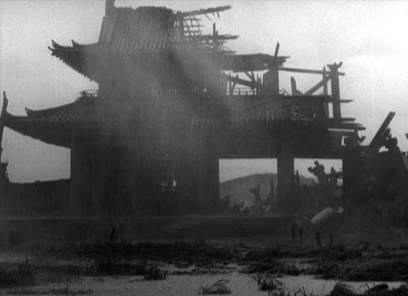 Under a ruined gate outside Kyoto during a time of civil war, a cynical peasant (Kichijiro Ueda) takes refuge from the rain and finds a priest (Minoru Chiaki) and woodcutter (Takashi Shimura). Both men lament a disturbing series of events they’ve experienced; they tell the peasant that they just arrived from court, where they testified against a bandit over the murder of a samurai and the rape of his wife. The woodcutter claims to have found the samurai’s body, while the priest says he passed by the samurai and his wife in the forest. But in court, the priest and woodcutter heard the varying testimonies of the violated wife (Machiko Kyo); the bandit Tajomaru (Toshiro Mifune), who was accused of murder and rape; and even the murdered samurai (Masayuki Mori) by way of a medium (Noriko Honma). Each testimony differs with just two facts among them constant: a rape and a death have occurred. Not even the accusation of murder remains consistent. The bandit claims he tricked the samurai and tied him up, raped the wife in front of her husband, and then dueled the husband by the wife’s request to preserve her honor, and then emerged victorious. In the wife’s account, she claims her husband scorned her for allowing herself to be raped so easily, and in a moment of fevered retaliation, she kills her husband. The husband’s spirit testifies that his wife agreed to run away with the bandit after the rape, but only if the bandit killed her husband. The bandit refused, and the husband killed himself out of grief with his wife’s dagger, which he felt taken from his body by an unknown party after his death.
Under a ruined gate outside Kyoto during a time of civil war, a cynical peasant (Kichijiro Ueda) takes refuge from the rain and finds a priest (Minoru Chiaki) and woodcutter (Takashi Shimura). Both men lament a disturbing series of events they’ve experienced; they tell the peasant that they just arrived from court, where they testified against a bandit over the murder of a samurai and the rape of his wife. The woodcutter claims to have found the samurai’s body, while the priest says he passed by the samurai and his wife in the forest. But in court, the priest and woodcutter heard the varying testimonies of the violated wife (Machiko Kyo); the bandit Tajomaru (Toshiro Mifune), who was accused of murder and rape; and even the murdered samurai (Masayuki Mori) by way of a medium (Noriko Honma). Each testimony differs with just two facts among them constant: a rape and a death have occurred. Not even the accusation of murder remains consistent. The bandit claims he tricked the samurai and tied him up, raped the wife in front of her husband, and then dueled the husband by the wife’s request to preserve her honor, and then emerged victorious. In the wife’s account, she claims her husband scorned her for allowing herself to be raped so easily, and in a moment of fevered retaliation, she kills her husband. The husband’s spirit testifies that his wife agreed to run away with the bandit after the rape, but only if the bandit killed her husband. The bandit refused, and the husband killed himself out of grief with his wife’s dagger, which he felt taken from his body by an unknown party after his death.
After three testimonies and three incompatible versions of the same story are relayed to the peasant by the priest and woodcutter, there’s yet another hint of doubt. Finally, the woodcutter admits his court testimony was false and that he witnessed the entire scene. He claims to have seen the bandit pleading with the woman to run away with him after the rape. In the woodcutter’s version, the wife responds with indecision and then demands that the two men duel for her hand. Reluctantly, the men duel and the bandit kills the samurai, but the wife and bandit each run their separate ways in terror. At the Kyoto gate, none of the men can grasp what any of it means; however, the woodcutter’s admitted presence at the scene brings into question whether or not he stole the dagger from the samurai’s body, perhaps to sell it for a hefty profit. The peasant, content that no meaning exists in such anecdotal contradictions, pessimistically resolves, “Don’t worry about it—it isn’t as though men were reasonable.” Then, all at once, the three men at the gate hear the cry of a baby. The amoral peasant begins to take the child’s clothes to sell for food, but the priest and woodcutter are appalled by this. The priest, already so confused and disenchanted by the testimonies, cannot respond, but the woodcutter intervenes. He takes the child into his arms and, just as the rain stops and the sun breaks through the clouds, the woodcutter begins to return home and vows to protect the child.
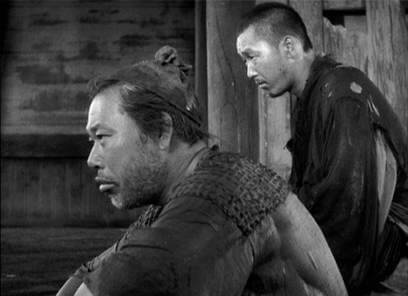 And yet, because none of the recountings can be reconciled, not even the woodcutter’s testimony, Rashomon becomes a story of unreliable narrators from whom no truth can be determined. Some form of hope exists at the film’s conclusion, but the degree to which we can believe the woodcutter depends mainly on the viewer. More than one of the testimonies, if not all, including the woodcutters, must be false. They cannot all be true given the opposing possibilities of the samurai’s death, the missing dagger, and several other loose ends. Each of the three persons involved confessed and claimed responsibility for the samurai’s death, whereas the woodcutter, who has already changed his story, may have lied again to avoid implicating himself as a thief, if indeed he shamefully stole the dagger from the samurai’s body. This unresolvable uncertainty persists as Rashomon’s most fascinating quality, in that meaning cannot necessarily be construed from the events in the picture, at least not within the story itself. Like a great work of conceptual art, meaning must be invested for subjective truth, while no hope for objective truth exists within the confines of the film. Fortunately, Shimura’s affecting performance as the woodcutter allows us to believe that, though he may have lied and even stolen the dagger in the forest, his woodcutter acts out of some latent guilt and need for repentance by adopting the child. Kurosawa, who often put Shimura in the most soulful of roles, undoubtedly cast him for this very reason. Because of Shimura, the film’s final moments contain a distantly encouraging resolution instead of an atmosphere of impossible, miserable uncertainty.
And yet, because none of the recountings can be reconciled, not even the woodcutter’s testimony, Rashomon becomes a story of unreliable narrators from whom no truth can be determined. Some form of hope exists at the film’s conclusion, but the degree to which we can believe the woodcutter depends mainly on the viewer. More than one of the testimonies, if not all, including the woodcutters, must be false. They cannot all be true given the opposing possibilities of the samurai’s death, the missing dagger, and several other loose ends. Each of the three persons involved confessed and claimed responsibility for the samurai’s death, whereas the woodcutter, who has already changed his story, may have lied again to avoid implicating himself as a thief, if indeed he shamefully stole the dagger from the samurai’s body. This unresolvable uncertainty persists as Rashomon’s most fascinating quality, in that meaning cannot necessarily be construed from the events in the picture, at least not within the story itself. Like a great work of conceptual art, meaning must be invested for subjective truth, while no hope for objective truth exists within the confines of the film. Fortunately, Shimura’s affecting performance as the woodcutter allows us to believe that, though he may have lied and even stolen the dagger in the forest, his woodcutter acts out of some latent guilt and need for repentance by adopting the child. Kurosawa, who often put Shimura in the most soulful of roles, undoubtedly cast him for this very reason. Because of Shimura, the film’s final moments contain a distantly encouraging resolution instead of an atmosphere of impossible, miserable uncertainty.
In a brief period between 1949 and 1951, Kurosawa had left his home base studio of Toho Co., Ltd. to make pictures for other studios. He produced Rashomon at Daiei Film Co. Ltd., whose executives didn’t hesitate to voice their disapproval and concern over the script’s confusing storyline. On the other hand, Kurosawa’s name had earned its clout, and the film was budgeted at $140,000—a price tag that was twice the budget of a typical Japanese production. The costs may seem curious given there are only three sets in the film (the forest, the plain courtyard, and the gate). But Kurosawa insisted that production designer Takashi Matsuyama build the entire dilapidated Kyoto gate setpiece for authenticity, requiring some tricky engineering to ensure the ramshackle look within a safely assembled structure. Given his meticulous preparation, Kurosawa shot fast. Yet, his stylistic and technical elements merge seamlessly with the narrative, making Rashomon seem deceptively simple—though there’s much to appreciate in how Kurosawa does what he does. Visuality is crucial in a Kurosawa film, given his background as a painter. For Rashomon, the director sought a cleanness in his visual technique to reflect a very “Japanese” and a very modern drive toward simplified formality. At the same time, his actors perform with the mannered expressiveness of the silent film era.
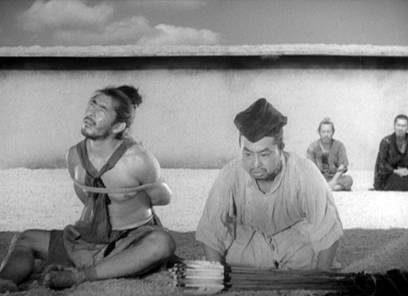 The influence of silent film on Kurosawa is evident throughout Rashomon and the director’s compositions, especially in the scenes involving the samurai, his wife, and the bandit. Kurosawa and his cinematographer, the famed Kazuo Miyagawa (who also shot many of Kenji Mizoguchi’s best films), establish the theme of varied perspectives in visual terminology. The three main characters are often framed together in triangular compositions, frequently with one of them in close-up, though the composition’s emphasis alters from scene to scene. At the same time, Miyagawa uses an ever-moving camera to capture the continuity of a scene. Dolly shots and pans fill the picture, while the visuals themselves have a distinct meaning. Consider how the court scenes are shot in open spaces; the witnesses give their testimony as outwardly open evidence on cleanly combed sand inside clear white walls, whereas the forest scenes remain in contention. The forest itself confuses our perspective visually, with shots peering through trees and the camera moving through the woods like a spectator whose angle is always unclear, in motion, or skewed by foliage. Miyagawa famously pointed his camera at the sun through the trees, a perfect metaphor to describe our obstructed impression of truth as filtered through unreliable sources, the light glimmering through the leaves in beautiful flickers, but our view of the sun distorted nonetheless. So, too, does the rain represent a visual distortion of truth, the woodcutter telling his story during a downpour that characterizes the confusion and sadness he feels about his story. In the end, the storm breaks as the woodcutter achieves some clarity and resolves to place his hope in the infant child, the future.
The influence of silent film on Kurosawa is evident throughout Rashomon and the director’s compositions, especially in the scenes involving the samurai, his wife, and the bandit. Kurosawa and his cinematographer, the famed Kazuo Miyagawa (who also shot many of Kenji Mizoguchi’s best films), establish the theme of varied perspectives in visual terminology. The three main characters are often framed together in triangular compositions, frequently with one of them in close-up, though the composition’s emphasis alters from scene to scene. At the same time, Miyagawa uses an ever-moving camera to capture the continuity of a scene. Dolly shots and pans fill the picture, while the visuals themselves have a distinct meaning. Consider how the court scenes are shot in open spaces; the witnesses give their testimony as outwardly open evidence on cleanly combed sand inside clear white walls, whereas the forest scenes remain in contention. The forest itself confuses our perspective visually, with shots peering through trees and the camera moving through the woods like a spectator whose angle is always unclear, in motion, or skewed by foliage. Miyagawa famously pointed his camera at the sun through the trees, a perfect metaphor to describe our obstructed impression of truth as filtered through unreliable sources, the light glimmering through the leaves in beautiful flickers, but our view of the sun distorted nonetheless. So, too, does the rain represent a visual distortion of truth, the woodcutter telling his story during a downpour that characterizes the confusion and sadness he feels about his story. In the end, the storm breaks as the woodcutter achieves some clarity and resolves to place his hope in the infant child, the future.
Also derived from silent film, Kurosawa insisted on a pointedly expressive dramatic style from his actors, viewed as overacting upon Rashomon’s release rather than a harkening back to any Japanese theatrical style. This is most evident in the performances of Machiko Kyo (a sex symbol dubbed “Japan’s Marilyn Monroe” by the media) and Toshiro Mifune (Kurosawa’s foremost collaborator), both giving larger-than-life performances, their faces wildly expressive, their mocking laughs exaggerated, and their gestures grandiose. Though the acting and Miyagawa’s framing were strongly influenced by silent films, Rashomon’s editing was nothing if not modern. Kurosawa served as editor, assembling these shots through economic cutting that never wastes a moment, all planned before shooting had even begun. The director alternates between perspectives with his standard transitional wipe—a line moving across the screen, like flipping a page. Countless filmmakers would borrow this effect in the future, most famously George Lucas in his Star Wars films. Rashomon’s editing was extremely economical for Kurosawa, whose films were generally longer than the runtime here (a mere 88 minutes, one of his shortest films). In conjunction with Kurosawa’s sharp editing style, composer Fumio Hayasaka’s score carries the film’s momentum along with his tempo-based music.
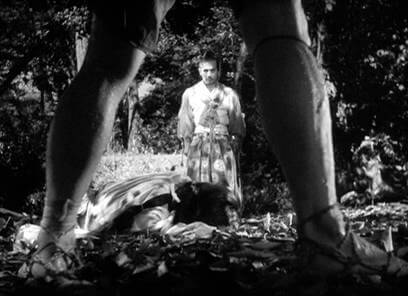 No one had seen anything like Rashomon in 1950. Not even the distributors at Daiei knew what to think, and after announcing that he didn’t understand what Rashomon was about, studio head Masaichi Nagata had his name removed from the credits. Nevertheless, the studio distributed the film in major theaters when they could have dumped its release. It performed well, becoming one of 1950’s top performers in Japan, despite Japanese critics calling it too complicated or too vulgar. Unlike Daiei executives, audiences intrinsically understood Rashomon, even those who saw it without a benshi (a commentator hired by theater owners to explain the film to moviegoers, a position once common for silent films). So when Daiei received a request to submit a film into consideration at the Venice Film Festival, the studio, which had not participated in many international film festivals at this point, and which had very little confidence in Rashomon, reluctantly conceded to a recommendation by the head of Italiafilm in Japan that Rashomon be submitted. Much to Daiei’s shock, it won the top prize at the 1951 Venice Film Festival over the likes of Billy Wilder’s Ace in the Hole and Jean Renoir’s The River, a victory often attributed to Kurosawa’s “Western” style and worldly philosophical method. The way the film is both investigative and speculative, filled with unanswerable questions yet ends with hope, represents Japanese traits more than Wester. It aligns with Western optimism over the rigid traditionalism and formality of Japanese culture and art throughout history.
No one had seen anything like Rashomon in 1950. Not even the distributors at Daiei knew what to think, and after announcing that he didn’t understand what Rashomon was about, studio head Masaichi Nagata had his name removed from the credits. Nevertheless, the studio distributed the film in major theaters when they could have dumped its release. It performed well, becoming one of 1950’s top performers in Japan, despite Japanese critics calling it too complicated or too vulgar. Unlike Daiei executives, audiences intrinsically understood Rashomon, even those who saw it without a benshi (a commentator hired by theater owners to explain the film to moviegoers, a position once common for silent films). So when Daiei received a request to submit a film into consideration at the Venice Film Festival, the studio, which had not participated in many international film festivals at this point, and which had very little confidence in Rashomon, reluctantly conceded to a recommendation by the head of Italiafilm in Japan that Rashomon be submitted. Much to Daiei’s shock, it won the top prize at the 1951 Venice Film Festival over the likes of Billy Wilder’s Ace in the Hole and Jean Renoir’s The River, a victory often attributed to Kurosawa’s “Western” style and worldly philosophical method. The way the film is both investigative and speculative, filled with unanswerable questions yet ends with hope, represents Japanese traits more than Wester. It aligns with Western optimism over the rigid traditionalism and formality of Japanese culture and art throughout history.
With its pointedly Western appeal and fame drawn from its Venice Film Festival win, Kurosawa’s film would single-handedly open the floodgates for Japanese cinema into foreign markets, allowing Japanese films to become internationally considered. The Academy of Motion Picture Arts and Sciences also awarded its first Oscar for Best Foreign film to Rashomon. But the result of Rashomon’s popularity today is that it suffers from overexposure. Whereas the film’s complete abandonment of conventional narrative storytelling was unheard of during its initial release, today, the trend is all-too-common, if not a cliché. Hollywood remade Rashomon into a Western called The Outrage in 1946 (starring Paul Newman, Claire Bloom, Edward G. Robinson, and Lawrence Harvey). Still, the film’s influence had more impact by opening up the possibilities of story structure. Films like The Usual Suspects (1996) and Memento (2000), or the third season episode from Star Trek: The Next Generation called “A Matter of Perspective,” each explored the unreliable witness. But Rashomon remains unique among its followers in that its nonlinear narrative structure has no resolution to its elliptical puzzle. The audience never learns what the courts decides. Was either the wife, bandit, or both found guilty, or did the court dismiss the case? There is no truth to be found in the film; no answers afforded the audience, only a sense of hope. Like many Kurosawa pictures of the era, Rashomon’s bleak message reflects postwar Japan’s loss of identity and how wartime barbarism tore the country’s cultural identity apart. Ever hopeful, Kurosawa uses the baby to personify the possibilities of a New Japan.
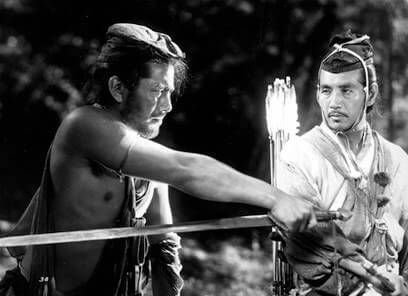 On an even broader scope that further emphasizes the complex intertextuality of the narrative and thematic throughlines, Kurosawa’s film questions the very nature of cinema. Film itself exists as truth because, more than any other sense, sight coincides with certainty. The aphorism, “It must be seen to be believed,” applies to any number of heartily debatable belief systems such as religious skepticism or certainty in the existence of extra-terrestrials. Cinema remains so powerful because it employs the power of sight and transforms the reality of vision into an escape through art. Jean-Luc Godard famously remarked how “cinema is truth twenty-four times a second.” But long before Godard ever waxed philosophical about film, Kurosawa had already contradicted his statement with Rashomon, in effect siding with Brian DePalma’s later contention of Godard’s statement: “The camera lies all the time; lies 24-times-per-second.” Indeed, Rashomon brings the cinema’s visual power-as-truth into question and offers its audience a participatory role in determining which testimonial is true. Note how the court inquisitor never appears onscreen but rather seems situated behind the camera, as though the testimony offered during the interrogation is presented to the viewer as evidence in our own existential trial. The stakes demand that we determine what happened in the woods that day and decide how we feel about the truth of the film.
On an even broader scope that further emphasizes the complex intertextuality of the narrative and thematic throughlines, Kurosawa’s film questions the very nature of cinema. Film itself exists as truth because, more than any other sense, sight coincides with certainty. The aphorism, “It must be seen to be believed,” applies to any number of heartily debatable belief systems such as religious skepticism or certainty in the existence of extra-terrestrials. Cinema remains so powerful because it employs the power of sight and transforms the reality of vision into an escape through art. Jean-Luc Godard famously remarked how “cinema is truth twenty-four times a second.” But long before Godard ever waxed philosophical about film, Kurosawa had already contradicted his statement with Rashomon, in effect siding with Brian DePalma’s later contention of Godard’s statement: “The camera lies all the time; lies 24-times-per-second.” Indeed, Rashomon brings the cinema’s visual power-as-truth into question and offers its audience a participatory role in determining which testimonial is true. Note how the court inquisitor never appears onscreen but rather seems situated behind the camera, as though the testimony offered during the interrogation is presented to the viewer as evidence in our own existential trial. The stakes demand that we determine what happened in the woods that day and decide how we feel about the truth of the film.
As Japanese film scholar and Kurosawa expert Donald Richie observed, “Rashomon is like a vast distorting mirror or, better, a collection of prisms that reflect and refract reality.” Through the process of truth contortion, the film implies that people cannot be trusted, that truth is relative, and only subjective interpretation exists. “Men are only men,” says the peasant. “They can’t tell the truth—not even to each other.” The priest confirms as much: “It is because men are so weak. That’s why they lie. That’s why they must deceive themselves.” In essence, Kurosawa reminds us that no reality exists except for the one we create for ourselves. And yet, for a picture about the relative nature of truth, Rashomon is profoundly accessible and entertaining in its exploration of this philosophy, transcending nationalistic borders and, even amid a devastating theme of despair, finding a means of hope. The films of Akira Kurosawa would not always preserve such optimism, particularly in his later, more theatrical and pointedly Shakespearian works. Nevertheless, Rashomon remains such a powerful motion picture for how it concedes to a universe devoid of universal truths and yet finds a purpose for existence in the most poetic and simplest of sources.
Bibliography:
Galbraith IV, Stuart. The Emperor and the Wolf: The Lives and Films of Akira Kurosawa and Toshiro Mifune. New York: Faber and Faber, 2002.
Goodwin, James. Akira Kurosawa and Intertextual Cinema. Baltimore: Johns Hopkins University Press, c1994.
Kurosawa, Akira. Something Like An Autobiography. New York : Knopf: distributed by Random House, 1982.
Richie, Donald. The Films of Akira Kurosawa, Third Edition, Expanded and Updated. With additional material by Joan Mellen. Berkeley, Calif.: University of California Press, 1996.
Richie, Donald; Schrader, Paul. A Hundred Years of Japanese Film: A Concise History, with a Selective Guide to DVDs and Videos. Tokyo; New York: Kodansha International: Distributed in the U.S. by Kodansha America, 2005.
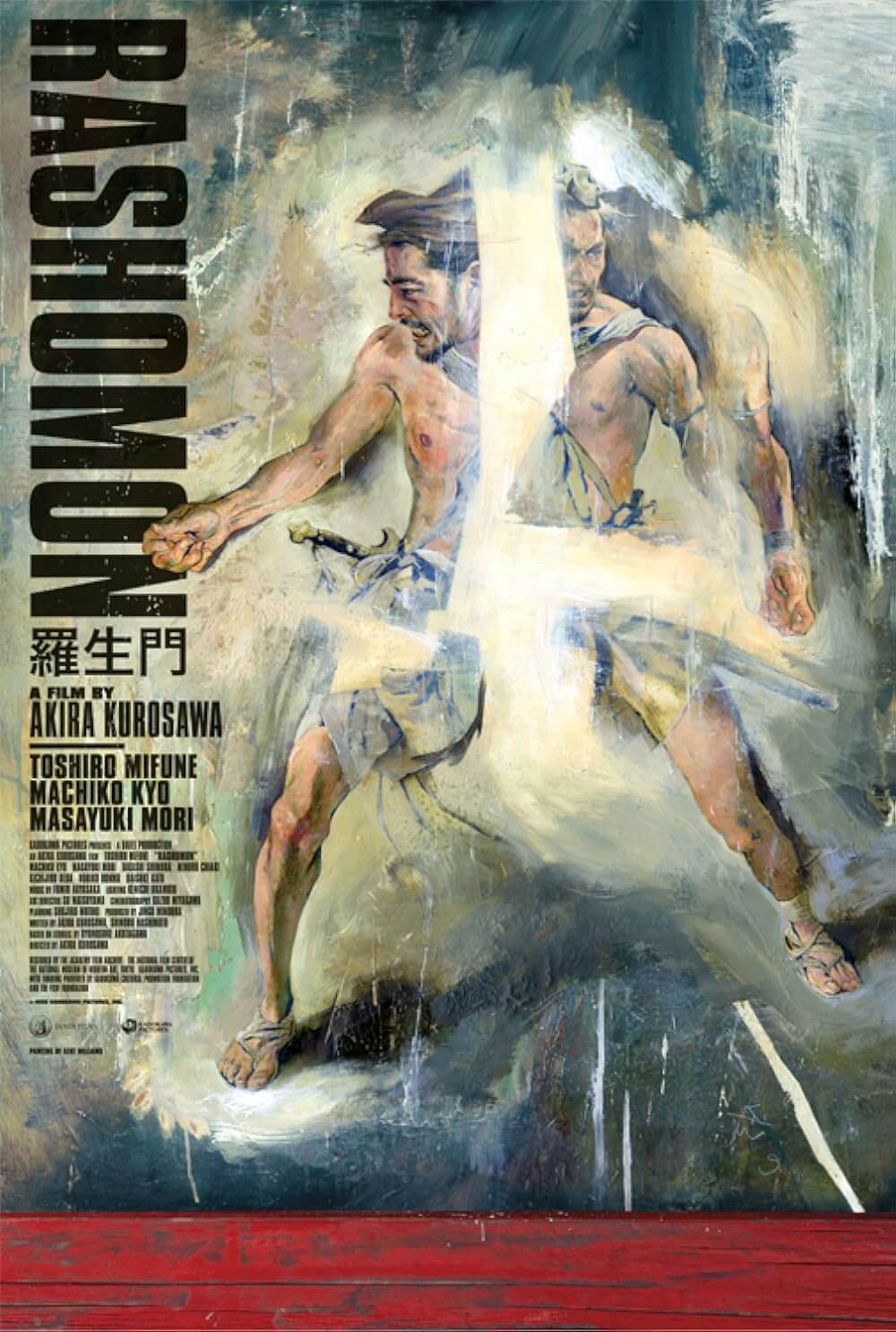
Thank You for Supporting Independent Film Criticism
If the work on DFR has added something meaningful to your love of movies, please consider supporting it.
Here are a few ways to show your support: make a one-time donation, join DFR’s Patreon for access to exclusive writing, or show your support in other ways.
Your contribution helps keep this site running independently. However you choose to support the site, please know that it’s appreciated.
Thank you for reading, and for making this work possible.
Brian Eggert | Critic, Founder
Deep Focus Review


